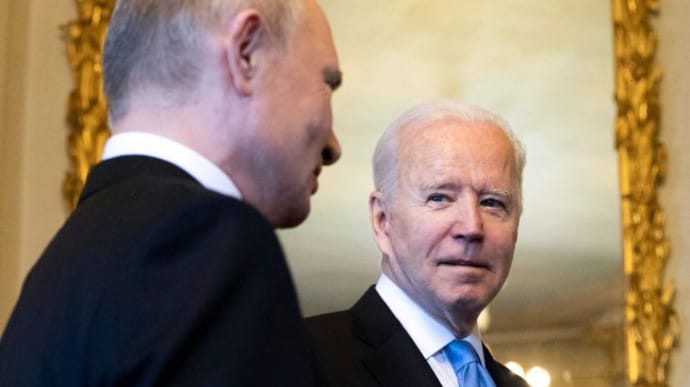In Hong Kong in 2019-20, millions took to the streets to oppose the repressive actions of an authoritarian regime. But ultimately their voices were silenced, their leaders jailed and China stripped away their democratic rights – as western leaders looked on, wringing their hands.
In Belarus, nationwide protests erupted when a cruel dictator stole the 2020 election. The UN said hundreds of people were abused, tortured, raped. But the dictator, Alexander Lukashenko, propped up by his loathsome buddy in Moscow, remains truculently in power.
In Myanmar, the army launched a coup last year, replacing elected politicians with a military junta. Its boss, General Min Aung Hlaing, stands accused of overseeing genocide and ethnic cleansing of the Rohingya minority – but has got off scot-free so far.
It’s a pattern that repeats with dismaying frequency around the world. Just look at the Arab spring “revolutions” in Syria and Egypt. The people rise up, the people are crushed – and the western democracies, crying foul, eventually accept the new-old reality.
Is this the fate now awaiting the young women of Iran who have bravely taken the lead in challenging the latest lethal excesses of Tehran’s morally bankrupt regime? Like other countries, Iran’s 1979 revolution vanquished a tyrant, only to have another take his place.
Yet today’s ongoing nationwide protests, defying brutal crackdowns, are unusual in several respects. While most seem to be led by young women and schoolgirls, backed by young men, a wide range of ages, ethnic groups and social classes is represented.
The uprising has no leaders, organisation or manifesto other than “Women, life, liberty” – a slogan signalling collective commitment to human rights, free expression and democratic self-determination. Little wonder this vile regime cannot comprehend it.
Most strikingly, the women show no fear. They refuse to be cowed (or covered). These vigorous younger generations care nothing for the Islamic Republic’s 43-year history of grand designs, broken promises and bloody wars. For them it is corrupt, anachronistic and irrelevant.
Nor has the unrest anything to do with “foreign plots” – the regime’s hackneyed, catch-all excuse for failure. It has everything to do with high educational attainment, the internet and social media, globalised culture, and the denial of personal and career freedoms that are the accepted norm elsewhere.
Whether or not the mullahs realise it, these courageous young women are Iran’s future. No longer can they be silenced, closeted and forcibly isolated from the world. They’re connected. They inhabit the era of #MeToo and Black Lives Matter. They know it, celebrate it.
After years in gestation and several wrenching false starts, citizen-based politics has arrived in Iran. It’s setting an agenda for change. And there’s no putting that genie back in the bottle. For the supreme leader, the arch-reactionary Ayatollah Ali Khamenei, and for his placeman president, Ebrahim Raisi, the message is plain: give way or “get lost”.
Next week or next year, sooner or later, the second Iranian revolution is coming. The wheel is turning anew. And over time, no amount of killings, detentions, censorship and threats, no amount of shaming of young women, no futile efforts to persist with mandatory hijab – that potent symbol of revolt – can stop it.
That said, the Shia clerical oligarchy will not willingly embrace this dawning reality. It will resist every which way it can. Its victims, such as the heroic, much-persecuted women’s rights lawyer Nasrin Sotoudeh, know how viciously the regime clings to its beliefs, prejudices and power.
And yet, as Shirin Ebadi, one of Iran’s first female judges and 2003 Nobel peace prizewinner, has noted, the battle is not with Islam but with those who exploit and distort it for their own ends. Men like the Islamic Republic’s theocratic founding dictator, Ayatollah Ruhollah Khomeini.
“An interpretation of Islam that is in harmony with equality and democracy is an authentic expression of faith,” Ebadi wrote in her 2006 book, Iran Awakening. “It is not religion that binds women, but the selective dictates of those who wish them cloistered.”
Iran’s women’s revolt comes amid increased scrutiny of the subjugation and abuse of women in Muslim countries. The Saudi government attracted deserved opprobrium in August after the outrageous jailing for 34 years of Leeds university student Salma al-Shehab for her use of Twitter.
In Afghanistan, the Taliban’s misogynistic diktats, such as closing girls’ schools, have wrecked its hopes of international acceptance. The nightmare world of 1990s Kabul, unveiled in Khaled Hosseini’s A Thousand Splendid Suns, is back with a vengeance.
Yet across the developing world, positive examples may be found of self-empowered Muslim women taking charge. I’ve witnessed it myself, at a women-owned village crab business on the Bay of Bengal in Bangladesh, an agricultural collective in Mindanao in the Philippines, and a domestic violence support group in Kuala Lumpur, Malaysia.
In Idlib, north-western Syria, women have taken the leading role in providing education, food distribution and healthcare for refugees from the civil war. It’s a huge cultural shift – and appears permanent.
Viewed in this more hopeful context, it’s clear that Iran’s women are not alone in challenging the archaic shibboleths of male-dominated societies. And today’s upheavals belong to a continuum. Iran has changed massively since I first visited in 1977. The emancipatory process is slow and uneven, but it has no reverse gear.
Evidently, Iran’s regime will not go quietly or quickly. So what will the west do? As already discussed, recent history suggests: not a lot. A few harsh words here, a few sanctions there, and the global caravan moves on.
This is no surprise. And it’s a hard truth. Iran has many friends and well-wishers abroad who will do what they can. But for their second revolution to succeed, Iranians must firstly rely on themselves.
Note: This article have been indexed to our site. We do not claim legitimacy, ownership or copyright of any of the content above. To see the article at original source Click Here













